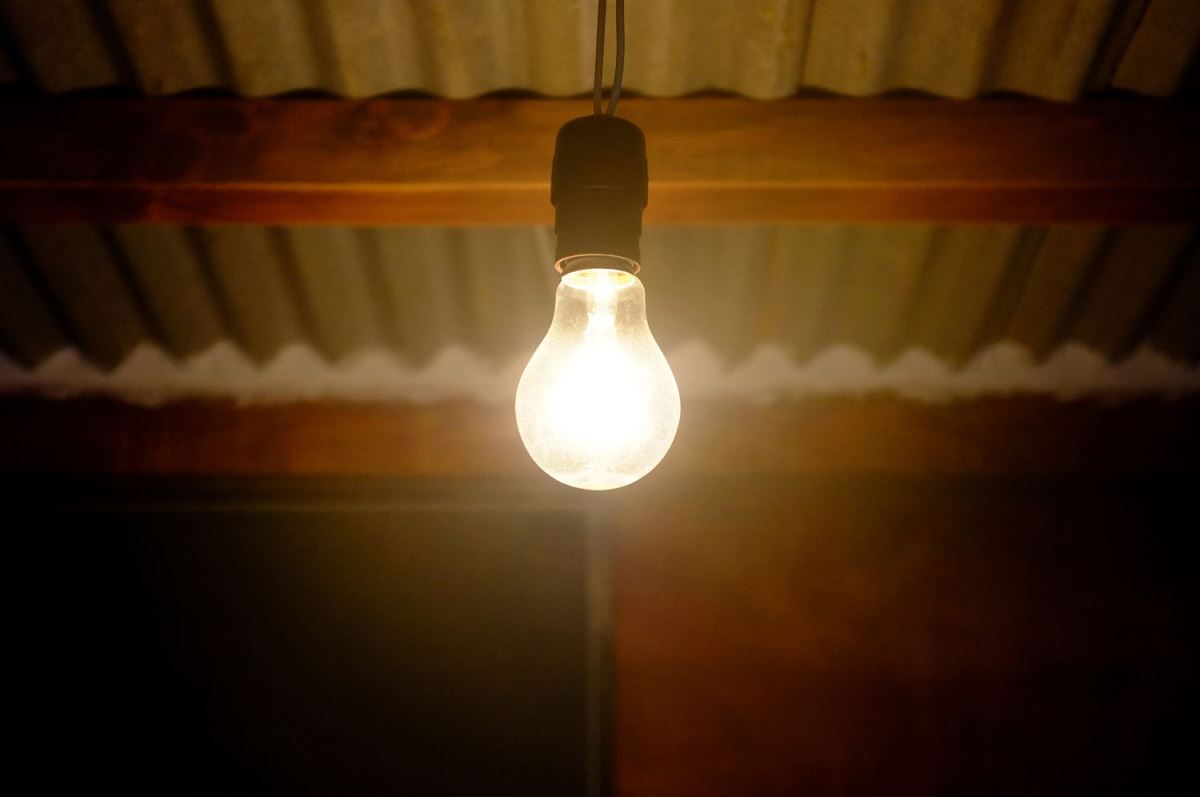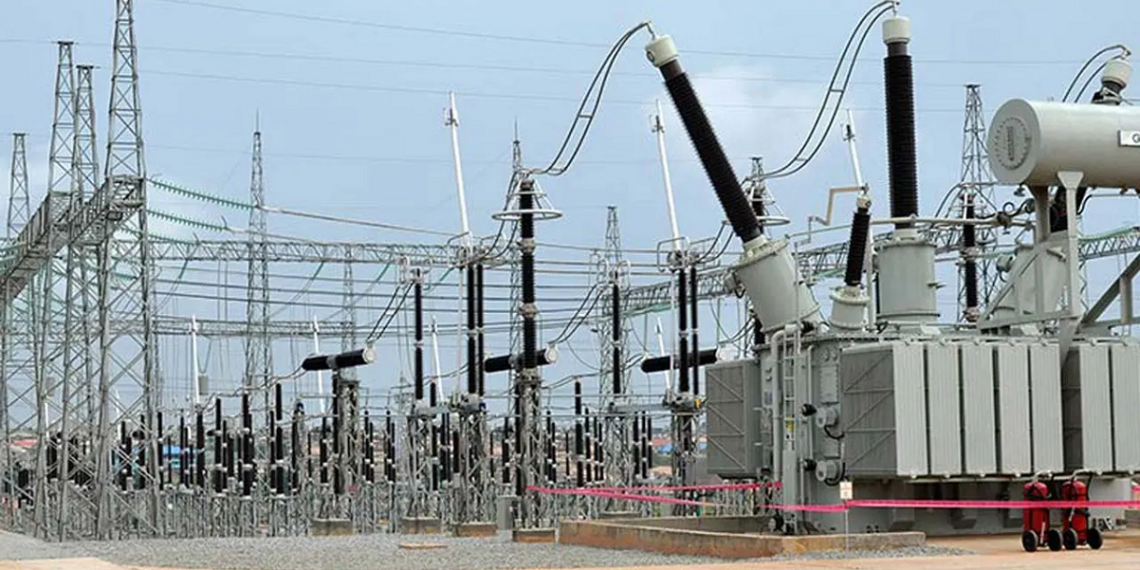Mr Eket Eko Ogbonga, the national secretary of the Network for Electricity Consumer Advocacy of Nigeria (NECAN), during a recent interview, shared insights into the controversial subsidy removal cum the increase in the tariff paid by consumers in Band A, from ₦68/KWh to ₦225/KWh, who, the Nigerian Electricity Regulatory Commission (NERC) claimed are consuming 20-24 hours of electricity daily.
He said that less than five percent of those in the Band actually get 20 hours of electricity supply.
He laid his mind bare on the metering problem among other germane issue.
Of the tremendous snippet garnered from his thought provoking insight was a rhetorical question; “Is there a mechanism put in place by the Commission on how they can be measured?
They are talking of going to feeders. Do consumers know what feeders are? Do consumers have access to the feeders?
Background
Some days back, the Federal Government of Nigeria jacked up the electricity tariff at a press briefing in Abuja, Musliu Oseni, the vice chairman of NERC, said the increase will see customers pay ₦225 kilowatts per hour, up from ₦66.
Oseni said these customers represent 15 per cent of the 12 million electricity customers in the country.
He added that the commission had also downgraded some customers on Band A to Band B due to non-fulfillment of the required hours of electricity provided by the electricity distribution company.
He said: “We currently have 800 feeders that are categorized as Band A, but it will now be reduced to under 500. This means that 17 percent now qualify as Band-A feeders. These feeders only service 15 per cent of total electricity customers connected to the feeders.
“The commission has issued an order which is titled April supplementary order and the commission allows a 235 kilowatt per hour.”
He noted that the review will not affect customers on the other Bands.
A feeder is a conductor which connects the sub-stations (or localized generating station) to the area where power is to be distributed. Generally, no tapings are taken from feeders so that current in it remains the same throughout.
The report also showed, in Lagos State for instance, subscribers of the Band A tariff plan who benefit from the 20 to 24 hours of daily power consumption from the Ikeja Electricity Distribution Company (Ikeja Electric) and the Eko Electricity Distribution Company (EKEDC).
They are:
Ijaiye (11-IJUINJ-T1-Ajuwon) in Abule-Egba Business Unit enjoys 601KW/h , Hiltop (11-HilltopINJ-T1-Hilltop) in Akowonjo Business Unit enjoys 656KW/h. Egbeda (33-AlimoshoTCN-Agege) in Akowonjo Business Unit enjoys 425KW/h, Adekunle Fajuyi (Adekunle FajuyiINJ-T1-Isaac John) in Ikeja Business Unit enjoys 1,195KW/h, Adekunle Fajuyi (Adekunle FajuyiINJ-T1-Oduduwa) in Ikeja Business Unit enjoys 1,104KW/h, Adeniyi Jones (Adeniyi JonesINJ-T1-Adeniyi Jones) in Ikeja Business Unit enjoys 1,117KW/h
Others are: Ilupeju (11-ILUPEJUINJ-T1-BHOJSON) in Ikeja Business Unit enjoys 1,619KW/h , Ilupeju (11-ILUPEJUINJ-T4-Ikorodu) in Ikeja Business Unit enjoys 997KW/h, Maryland (11-MarylandINJ-T1-PTC) in Ikeja Business Unit enjoys 1,152KW/h, New Alausa (11-New AlausaINJ-T4-Allen) in Ikeja Business Unit enjoys 1,085KW/h, New Alausa (11-New AlausaINJ-T4-Oregun) in Ikeja Business Unit enjoys 1,172KW/h, New Alausa (11-New AlausaINJ-T4-Siyanbola) in Ikeja Business Unit enjoys 1,142KW/h, New Alausa (11-New AlausaINJ-T5-Kudirat) in Ikeja Business Unit enjoys 995KW/h, New Alausa (11-New AlausaINJ-T6-Awolowo) in Ikeja Business Unit enjoys 1,009KW/h, New Alausa (11-New AlausaINJ-T6-Ogundana) in Ikeja Business Unit enjoys 1,067KW/h, Ojodu (OjoduINJ-T2-Express) in Ikeja Business Unit enjoys 960KW/h, Ojodu (OjoduINJ-T2-River Valley) in Ikeja Business Unit enjoys 997KW/h, Opebi (11-PTCINJ-T1-Opebi) in Ikeja Business Unit enjoys 971KW/h, Opebi (11-PTCINJ-T2-Awuse) in Ikeja Business Unit enjoys 1,232KW/h, Opebi (11-PTCINJ-T3-General Hospital) in Ikeja Business Unit enjoys 1,176KW/h, Opebi (11-PTCINJ-T3-Oba Akinjobi) in Ikeja Business Unit enjoys 1,082KW/h, Secretariat Estate (11-SecretariatINJ-T1-Estate) in Ikeja Business Unit enjoys 1,074KW/h Secretariat Estate (11-SecretariatINJ-T2-Agidingbi) in Ikeja Business Unit enjoys 1,007KW/h, Oshodi (11-AjaoINJ-T2-Sholanke) in Oshodi Business Unit enjoys 929KW/h,
Oshodi (11-ItireINJ-T2-Canal) in Oshodi Business Unit enjoys 733KW/h, Oshodi (11-ItireINJ-T3-Ago) in Oshodi Business Unit enjoys 723KW/h, Oshodi (11-Oke AfaINJ-T1-LCHE) in Oshodi Business Unit enjoys 721KW/h, Oshodi (11-ItireINJ-T3-Ago) in Oshodi Business Unit enjoys 723KW/h, Ejigbo (33-EjigboTCN-Agodo) in Oshodi Business Unit enjoys 890KW/h, Ejigbo (33-EjigboTCN-Egbe) in Oshodi Business Unit enjoys 905KW/h, 31. Ejigbo (33-EjigboTCN-Igando) in Oshodi Business Unit enjoys 1,352KW/h Ejigbo (33-EjigboTCN-Oke Afa 2) in Oshodi Business Unit enjoys 714KW/h and 64 others.
The issues
Speaking further, the National Secretary of the Network for Electricity Consumer Advocacy of Nigeria noted that in 2020-21, the Commission came up with what it called Service Based Tariff based on the principle of the more electricity that is supplied to business or household the more you pay.
“Now this led to the reclassification of electricity consumers’ tariff bands. We have band A: The consumers there would be supplied a minimum of 20 hours a day to pay at that rate; Band B 18 hours, Band C 12 hours, Band D 8 hours, and Band E 4 hours.
“We conducted a survey on Band A customers and we discovered that less than 5 per cent of those in that Band received 20hours. We discovered that some customers in 11 months never had 18 hours of electricity supply but they are on Band A”.
Meanwhile, the government and the power distribution companies (DISCos), have continued to complain of revenue shortfalls in the sector.
As at September 30, 2023, Nigeria’s metering gap stood at over 7 million- though reports suggests it could be more than that.
This is amid frequent grid collapse, which defied solutions.
A report by NERC shows that out of the total 12,825,005, registered electricity customers, only 5,707, 838 have meters, indicating that over 7.1 million registered customers still are subjected to the estimated billing system.
Although President Bola Ahmed Tinubu led administration recently established a Presidential Metering Initiative, which was announced by Adebayo Adelabu, minister of Power.
Similarly, a report by the International Energy Agency, the national grid collapse 46 times from 2017 to 2023, Nigerians endured more nationwide blackouts in 2023.
Nigeria was also thrown into darkness on Thursday 28th, March, 2024 following a collapse of the electricity grid controlled from Osogbo, Osun State, the development left virtually all franchise areas for Discos across the 36 states.
In the same vein the Federal Government of Nigeria, in its efforts to alleviate the recurring partial grid disturbance has established a committee to address the gas shortage in the power, according to Adebayo Adelabu, minister of power the committee comprises representatives from the two ministries, gas suppliers, the Nigeria Electricity Regulatory Commission (NERC), chain sector.
However, the Pan-Yoruba socio-cultural group Afenifere has condemned the recent hike in electricity tariff, asking President Bola Tinubu to compel the Ministry of Power to reverse the increase. Afenifere’s comment followed the Nigerian Electricity Distribution Company’s (NERC) electricity tariff hike for B and A users who enjoy at least 20 hours of power supply
“Tariff increase, whether you call it cost reflective tariff or whatever, is not the silver bullet that is needed in the market. Why tariff increase or reflection of cost in the market? We are dancing around the problem and our priorities have not been set right.
First, what is the percentage of customers in Band A that are metered? We have a huge metering gap. The meter is the revenue assurance tool in the business of electricity. Why do we have revenue shortfalls, huge subsidy they are talking about? Aggregate, technical and commercial losses are as high as 47 to 49 per cent. This means that for every N100 of electricity generated, transmitted and distributed, you are losing N47 to N49 and you are recovering the balance.
Zambia and Kenya Case Studies
In Zambia for instance, to guarantee revenue in the electricity sector, the meter is paramount.
If you meter 100per cent as it is done in Zambia, their ATC and C is 17 per cent. The solution to the liquidity in the market is the huge metering gap of over 7 million of unmetered customers which now leads to the inability of the Distribution Company to collect revenue.

You are not guaranteed your revenue. A customer complained he bought energy three days ago for ₦50, 000 for services not yet used. So, if you meter 100 per cent like is done in Zambia and Kenya, it will reduce revenue loss and shoot up your revenue collection. So, you cannot generate until distribution launches higher than generation to continue running around.
“In other words, until you can guarantee that what you generate you can distribute and get your money, we are not going to get there. And what will help you do that is the meter”, Eket said.
Electricity is a fundamental requirement for industrial and commercial activities. Without reliable power, businesses face operational difficulties, reducing productivity and competitiveness.
Lack of electricity also limits the establishment and growth of new industries, hindering job creation and economic growth. Electricity generation in Nigeria began in Lagos in 1886 with the use of generators to provide 60 kW.
In 1923, tin miners installed a 2 MW plant on the Kwali River; six years later, the Nigerian Electricity Supply Company, a private firm, was established near Jos to manage a hydroelectric plant at Kura to power the mining industry.
Then, another private enterprise was established in Sapele by United Africa Company to power the activities of the African Timber and Plywood Company.
Between 1886 and 1945, electric power generation was relatively low, with power provided primarily to Lagos and other commercial centers such as mining industries in Jos and Enugu. Hence, the colonial government created an electricity department within the Public Works Department, which then installed generating sets in many cities to serve government reservation areas and commercial centers.
In 1950, the Legislative Council of Nigeria began moves to integrate the electricity industry when it enacted a law to establish the Electricity Corporation of Nigeria (ECN) with the duties of developing and supplying electricity.
ECN took over the electricity sector activities within PWD and the generating sets of Native Authorities.
In 1951, the firm managed 46 MW of electricity.
Between 1952 and 1960, the firm established coal-powered turbines at Oji and Ijora, Lagos. In 1961, ECN completed a 132 kV transmission line linking Lagos to Ibadan via Shagamu; in 1965, this line was extended to Oshogbo, Benin, and Ughelli to form the Western System.
In 1962, a statutory organization, the Niger Dams Authority (NDA), was formed to build and maintain dams along River Niger and Kaduna River, NDA went on to commission a 320 MW hydropower plant at Kainji in 1969, with the power generated sold to ECN. In 1972 NDA and ECN merged to form the National Electric Power Authority (NEPA).
NEPA was the major electricity firm in Nigeria until power sector reforms resulted in the creation of the Power Holding Company of Nigeria (PHCN) and later the privatization of electricity generation and distribution, the rest they say is history.
Way Out
Now, power generation, transmission, and distribution are the three processes of delivering electricity to consumers in residential, industrial, and commercial areas
Corruption and mismanagement of funds in the power sector, vandalism of oil and gas pipelines and exploration facilities, inability of the government to partner with multinational oil companies to fully utilize gas, poorly planned maintenance culture, and indebtedness on the part of consumers affect electricity generation, transmission, and distribution in Nigeria. These must be tackled adequately.
The investor deserves return on investment (ROI), likewise the government should not be denied its revenue (taxes), but the customer who pays the bill deserves absolute service.
Therefore, we align ourselves with the study which recommended among others that the government should support the electricity distribution firms to generate more megawatts in order to provide constant power supply to their numerous customers and provide adequate facilities like transformers, switch box, switch gears, wire cables, meters, and circuit breakers in order to supply regular power to Nigeria, no matter the Band the citizen belongs.







Comments 2